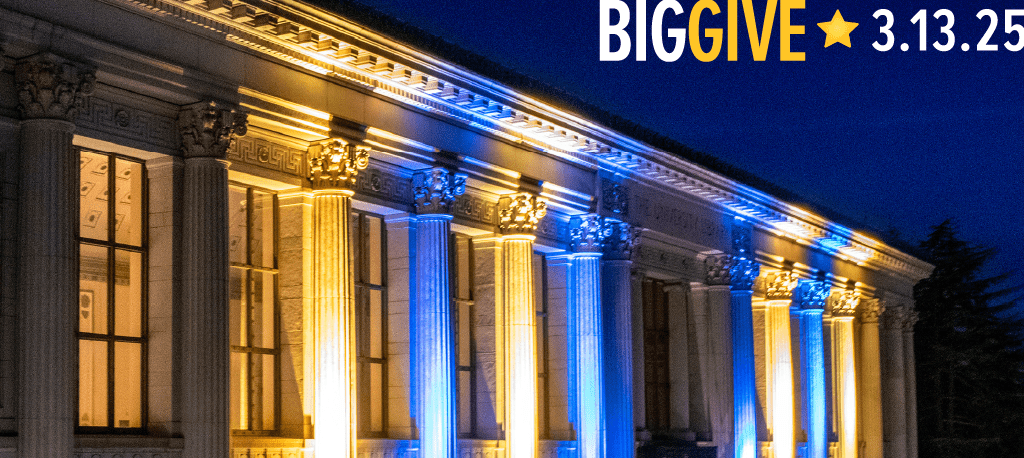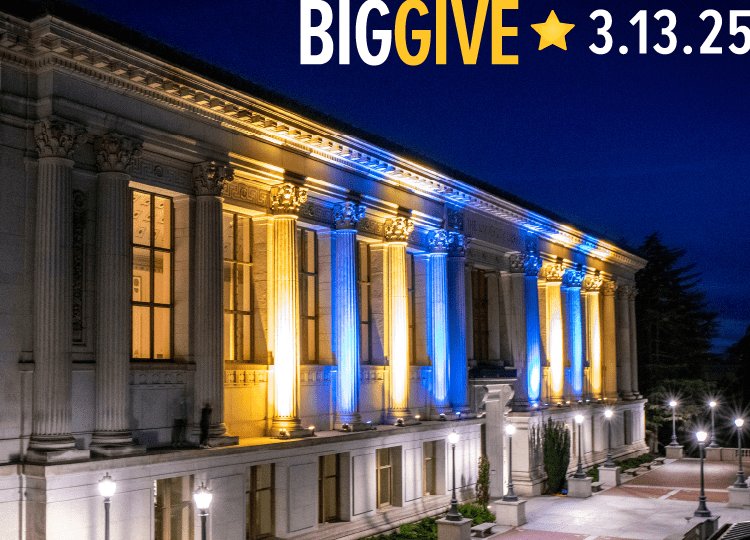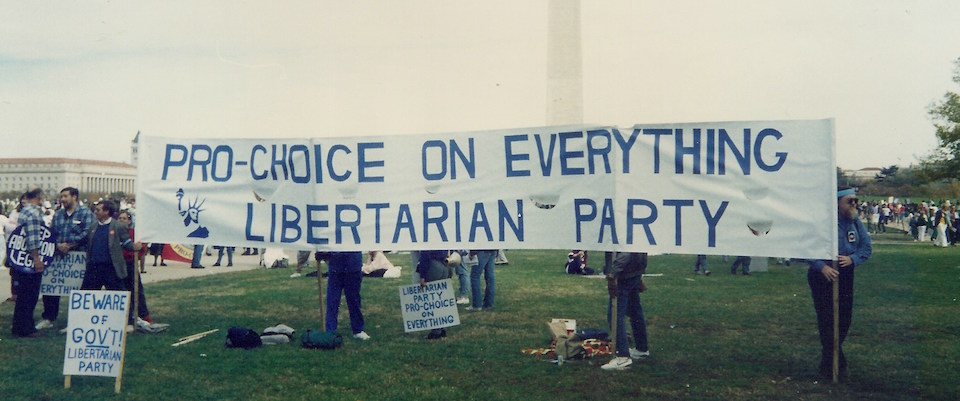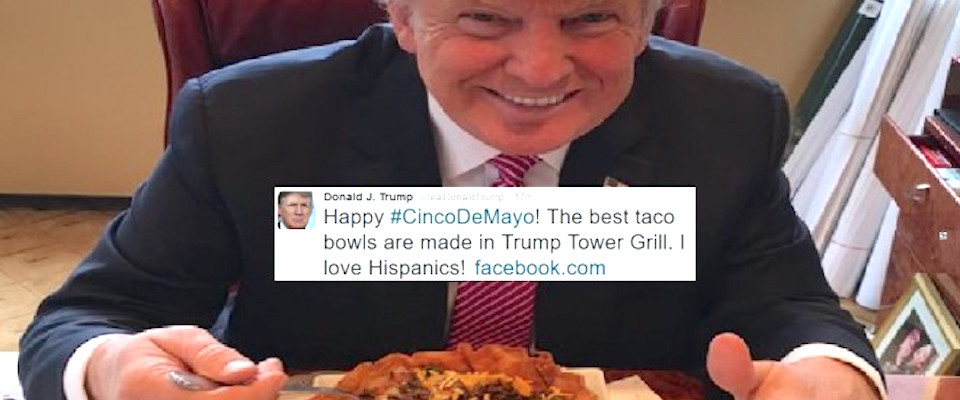With Hillary Clinton and Donald Trump unprecedentedly unpopular—55 percent of voters view her unfavorably, and 70 percent hold a negative opinion of him—third parties see a chance to make a real dent in this presidential election.
And the third party in the best position to do so? The only one likely to be on the ballot in all 50 states? The one having its most optimistic week ever? It’s the party of those socially liberal yet fiscally conservative Libertarians. Sure, as Full Frontal’s Samantha Bee notes, most Americans agree with only every other thing Libertarians say. Sure, as Libertarian presidential nominee Gary Johnson acknowledges, some Libertarians are “wonderful people” and others are “just batshit crazy.” Sure, the runner-up for the party’s presidential nod, Austin Petersen, has proclaimed that like most Libertarians he just wants “to live in a world where gay married couples can protect their marijuana fields with fully automatic machine guns.”
But it’s time to take the Libertarian Party seriously. The ticket boasts the combined experience of two former two-term Republican governors—Johnson of New Mexico and his vice presidential pick, William Weld of Massachusetts. A growing number of GOPers have said they’re either voting Libertarian this time or at least, like former presidential nominee Mitt Romney, they say they’re considering it.
And Johnson is currently hovering above 10 percent in the polls—that’s more than enough to swing the election. The new CBS Poll has Johnson at 11 percent, with only 7 percent separating presumptive Democratic nominee Clinton and presumptive Republican nominee Trump. The new Bloomberg Poll has Johnson at 9 percent, less than the 12 percent separating Clinton and Trump. And the latest poll by Fox News has Johnson at 12 percent, far more than the 3 percent spread between Hillary and The Donald.
If these figures were to hold, it would mark more than a 1,000 percent increase over the Libertarian Party’s previous high of 1 percent, which it attained in 2012 with Johnson, again, heading the ticket. And the media are starting to take note: CNN will host a primetime town hall featuring Johnson and Weld on June 22.
“They’re a strange combination,” says Terri Bimes, assistant director of research at UC Berkeley’s Institute of Governmental Studies. “Their motto is ‘keep the government out of my pocket and out of my bedroom.’ So on some issues, like abortion rights, marriage equality, global non-intervention and legalization of marijuana, they’re to the left of Clinton. On others, like minimizing the imprint of government on the economy and the culture—some purists don’t even think we should have driving tests—they’re to the right of Trump. So they could end up taking votes from both sides.”
And it wouldn’t take much to swing the election, one way or the other.
“Let’s say they only get 5 percent,” said election stat wizard Nate Silver of fivethirtyeight.com in a recent podcast. “That could still be larger than the margin separating Clinton from Trump. If they take 3 percent from Trump and 2 percent from Clinton, that leaves only a 1 percent swing. And a 1 percent swing could really matter.”
But predicting which side they would hurt more is a risky business.
“In 1980, most people assumed that when liberal Republican John Anderson ran as an independent, he would hurt Reagan,” says Bimes. “But post-election analysis showed that he actually hurt Carter more by giving anti-Reagan Republicans a place to cast their votes instead of having to vote for Carter.”
“He comes across like an underdog, with a little bit of the grass-rootsy, granola-eating feel that Democrats like. Besides, both Libertarians and Republicans are quite white, as are Sanders supporters.”
One reason pundits are taking Johnson and Weld seriously this year is that the deadline for qualifying for the ballot has already passed in several states, including vote-rich Texas. That inability to get on some state ballots is likely to severely handicap other third parties, such as Peace and Freedom or the Greens. But the Libertarians have already qualified in 32 states, including Texas, and are on track to qualify in all 50 for the third straight presidential election cycle.
“But even if they don’t, they could still make a big difference,” Bimes says. “Ralph Nader wasn’t on the ballot in all 50 in 2000, but he did get on the ballot in Florida, where he got 97,000 votes that probably would have gone to Gore. If Gore had gotten those votes he would have won the state outright, and there would have been no need for a recount, no hanging chads, and no Bush vs. Gore.”
Although conventional wisdom and current polling indicate that the Libertarians will pull more votes from Trump than Clinton, Silver notes that Johnson will attract some Democratic voters.
“I think Johnson will have some appeal to disaffected Sanders voters because of his position on gay marriage and money in politics,” he has said. “He comes across like an underdog, with a little bit of the grass-rootsy, granola-eating feel that Democrats like. Besides, both Libertarians and Republicans are quite white, as are Sanders supporters.”
Johnson and Weld say their goal is to rise to 15 percent in the polls by the fall, which would earn them a spot in the presidential and vice presidential debates. But even a 5 percent showing would trigger public financing for their campaign—a real boost at a time when the Democrats and Republicans are eschewing public money in favor of their own fund-raising efforts (disregarding the irony of a party that scorns government intervention choosing to accept public funds instead of going the private route).
The Libertarian Party was founded in 1972, nominating John Hospers and Tonie Nathan for president and vice president. They got one electoral vote from a “faithless elector” (the term for someone who votes for a candidate he/she wasn’t pledged to) from Virginia named Roger MacBride, who was pledged to Richard Nixon and Spiro Agnew but voted for Hospers and Nathan instead. Hospers was the first openly gay man to run for president, and Nathan became the first woman to get an electoral vote. Four years later, rogue delegate MacBride became the party’s presidential nominee himself.
The party’s official slogan was “There ain’t no such thing as a free lunch” (which party devotees abbreviated to the geeky acronym “TANSTAAFL”), a phrase taken from Robert Heinlein’s sci-fi novel The Moon Is a Harsh Mistress, known as “the manifesto of the Libertarian revolution.” Today, the official slogan is “The Party of Principle.”
In the 1990s several state Libertarian parties adopted the Liberty Penguin as their official mascot, while other state parties adopted the Liberty Porcupine, which is also the symbol of the Free State Project—a movement to recruit at least 20,000 Libertarians to move to New Hampshire in order to make the state a stronghold for Libertarian ideas. Every year for the past 13 years, New Hampshire’s White Mountains have been the site of the Porcupine Freedom Festival (aka “PorcFest”).
In 1980 the party nominated Ed Clark of California for president and David Koch—yes, one of the Koch brothers—for vice president. Koch’s money enabled the campaign to be self-funded that year, and the ticket racked up 921,128 votes, or 1.6 percent.
“There are different wings of the party,” Silver has explained. “Johnson is a true-blue Libertarian, liberal on the social issues and conservative on the economic issues. Then there’s the Rand Paul wing, which is a little bit more conspiratorial, and then there’s the rich a-hole wing.”
But, he added, he doesn’t include the Koch brothers in that last category. “The Kochs are fairly true-blue Libertarians.”
At this year’s Libertarian convention, Johnson beat four other contenders for the nomination, including Petersen as well as John McAfee, founder of the eponymous anti-virus software company, who assured the convention that humans will soon be replaced by artificial intelligence; Marc Allan Feldman, who never voted until he was 50; and Darryl Perry, who accepts campaign donations only in the form of Bitcoins or precious metals, had his nominating speech delivered by an “erotic services provider” named Starchild, and said 5-year-old children should have the legal right to inject heroin without adult supervision.
But Silver thinks the party is trying to reach out beyond its fringes by nominating Johnson and Weld, who both enjoyed success and great popularity during their gubernatorial terms. In fact, he calls the Libertarians “the most pragmatic of the three parties so far.”
The Libertarians are part of a long tradition of third parties going back to 1832, when the first third party, the Anti-Masonic Party, was formed. (Its main contribution to history was holding the first political convention.)
“It was so much easier for third parties to take on the major parties back then,” says Bimes. “Look at the Republicans. They nominated their first presidential candidate, John C. Fremont, in 1856. He lost, but four years later they gained control of both the White House and Congress.”
Why?
“For one thing, the parties printed their own ballots,” she says. “We didn’t even have secret voting until the 1890s, and that’s when you start to get states controlling the ballots. “
Despite their relative lack of electoral success, third parties can boast one thing: They often produce the most colorful candidates.
Third parties have always had a potential impact as spoilers. In 1912 ex-President Teddy Roosevelt—running on the Progressive, or Bull Moose, ticket—turned on his old party and got more popular and electoral votes than the Republican incumbent, William Howard Taft. But the split in the Republican ranks enabled the Democrat, Woodrow Wilson, to win an overwhelming majority of the electoral votes despite winning barely more than 40 percent of the popular vote.
Something similar happened in 1992, when independent Ross Perot took enough votes away from the incumbent Republican, George H.W. Bush, to enable Democrat Bill Clinton to win the Electoral College despite winning a only a plurality of the popular votes.
“The major difference is that in the 19th century third parties tended to be organized around issues, and despite losing the election, those issues were often adopted by one of the major parties. In 1880 and 1892 the Populist Party nominee, James Weaver, ran on a free silver platform. He lost both times, but free silver became part of the Democratic Party’s platform in 1896,” says Bimes. “But in the 20th century third parties have become vehicles for personalities, such as George Wallace in 1968 or Ross Perot in 1992, and their influence on policy has been minimal.”
Despite their relative lack of electoral success, third parties can boast one thing: They often produce the most colorful candidates, including comedian Roseanne Barr (Peace and Freedom 2012), Black Panther and pants designer Eldridge Cleaver (Peace and Freedom 1968; not to be confused with comedian Dick Gregory, who ran that same year on the Freedom and Peace ticket), feminist pioneer Victoria Woodhull (Equal Rights Party 1872) and former presidents Martin Van Buren (Free Soil Party 1848) and Millard Fillmore, who anticipated Donald Trump by 160 years as the nominee in 1856 of the anti-immigrant (especially anti–Irish Catholic) American Party, popularly known as the Know-Nothings because party members were instructed to say, “I know nothing” when questioned by the police.
But undoubtedly the most colorful of all were labor leader Eugene V. Debs and Glen Taylor. When Debs ran for president on the Socialist ticket in 1920, he was serving a 10-year sentence at the federal penitentiary in Atlanta for urging young men to resist the draft during World War I. His campaign slogan: “Prisoner 9653 for President.”
Taylor, an ultra-liberal senator from Idaho who was nominated by the Progressive Party for vice president in 1948, didn’t give an acceptance speech. Instead, he brought his wife and kids up on stage, where they all serenaded the delegates with a four-part barbershop quartet rendition of the popular ditty “I Love You As I Never Loved Before.”
Taylor and his running mate, former Vice President Henry Wallace, got enough votes in New York and Michigan to throw those two states to Republican Thomas E. Dewey. At the same time, another third party, the States Rights Party, headed by arch-segregationist Strom Thurmond of South Carolina, took several states in the South. But Democrat Harry Truman won anyway.
“Imagine how well Truman would have done without those third party challenges on either side,” said Bimes.
As for Taylor, he eventually moved to Millbrae, California, and began manufacturing a new toupee design modeled after the hairpiece he created for himself 20 years before. “I ran three times without it and lost, and I finally realized that the voters don’t have much use for bald politicians,” he explained. “I ran the fourth time with it and won.”
Within two years, the Taylor Topper, as it was called, had become the best-selling toupee in America. The company, now known as Taylormade Hair Replacement, is still going strong in Millbrae today. Donald Trump might want to look into it.





















